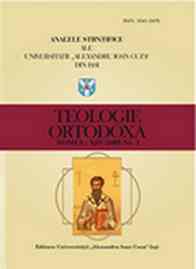Empress Catherine II of Russia’s Foreign Policy and Its Influence upon the Romanian Orthodox Church in Moldavia
Empress Catherine II of Russia’s Foreign Policy and Its Influence upon the Romanian Orthodox Church in Moldavia
Author(s): Daniel Niţă-DanielescuSubject(s): Christian Theology and Religion
Published by: Editura Universităţii »Alexandru Ioan Cuza« din Iaşi
Keywords: Orthodox Church; Catherine II; Romanian; Ottoman
Summary/Abstract: Russia’s Empress, Catherine II, also called “thre Great” (1762-1796), after she consolidates her rule at the domestic level, when she implicates her preference for some of the principles of the enlightened despotism, quite fashionable in Western Europe, resumes with new means and under new circumstances the path of the Russian expansion towards South. After the glorious military successes in the war with the Turks between 1769-1774, she will draw up a “Greek project”, aiming at releasing Constantinople from the Ottoman yoke, and installing here a Slav Emperor; the United Romanian Principalities were meant to form the “Kingdom” of Dacia. The plan, in which the Tsarina tries to attract Emperor Joseph II of Austria (together with whom she fights the Turks in 1787-1792) will fail, but at the time Catherine II dies, the Russian Empire’s frontiers were already extended up to the Dniester and the Black Sea. Under these circumstances, the situation of the Orthodox Church in the Romanian Principalities (under Ottoman rule, but enjoying a large autonomy) is an extremely difficult one. Thus, the military conflicts taking place on the Romanian territory often affect the church governing process, they raise internal organization problems and problems related to the fostering of natural relations with other ecclesiastic Orthodox structures (on the territory of the great rival powers other Orthodox Churches display their activities, with which the Church of the Romanian Principalities is in liturgical communion and canonic and disciplinary unity). One could also notice the weight of the cultural currents promoted by the Church: the one resorting to some of the principles of the enlightened despotism, the movement of spiritual renaissance initiated by Saint Paisius Velichkovsky (1722-1794), the hegumen of the monastery of Neamţ, as well as the one developed at the monastery of Putna, nourishing the attachment to the Orthodox values and the interest for the Romanian historical past (obliging the descendents to carry on the inheritance).
Journal: Analele Ştiinţifice ale Universităţii »Alexandru Ioan Cuza« din Iaşi. Teologie Ortodoxă
- Issue Year: 2009
- Issue No: 1
- Page Range: 67-82
- Page Count: 16
- Language: English

